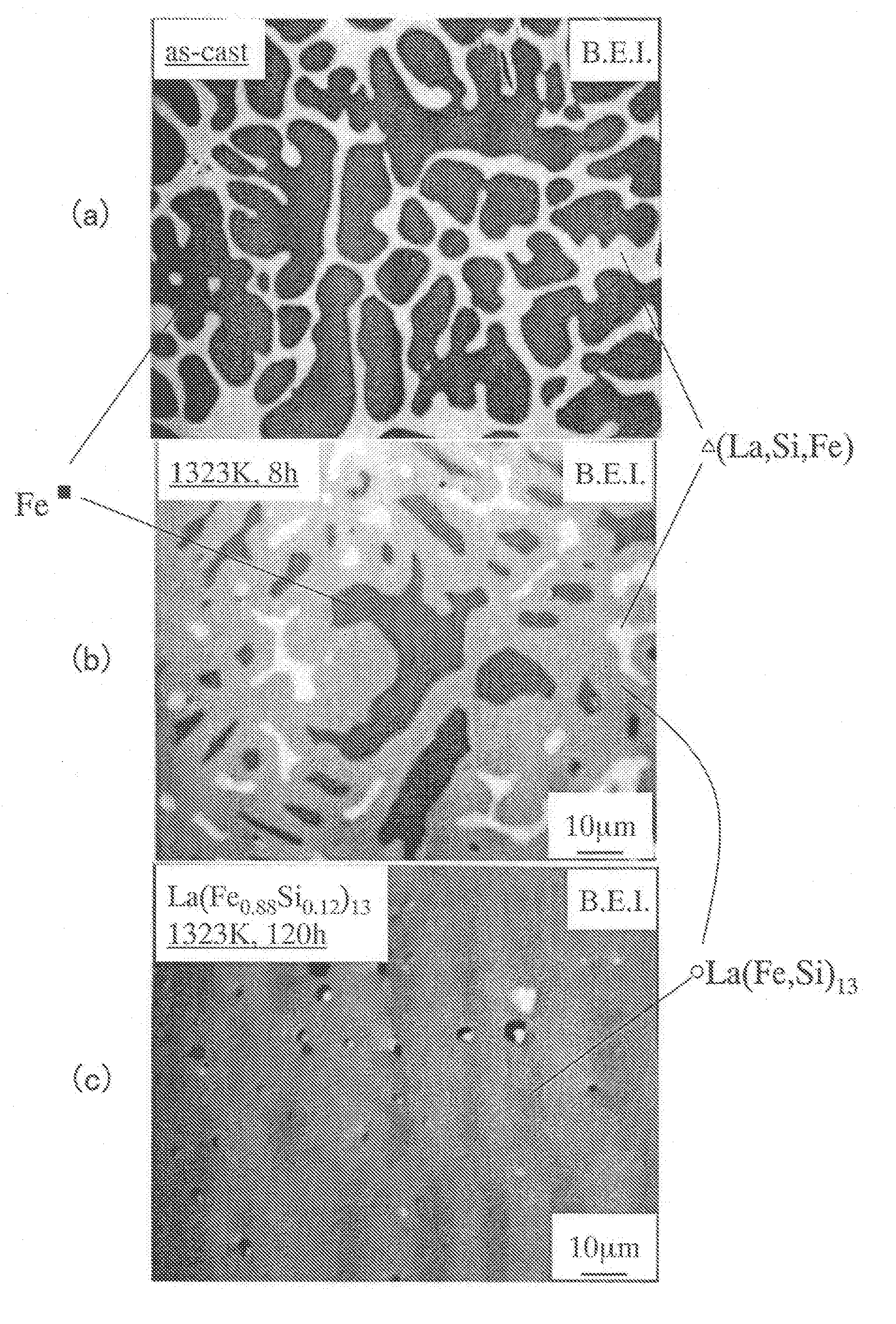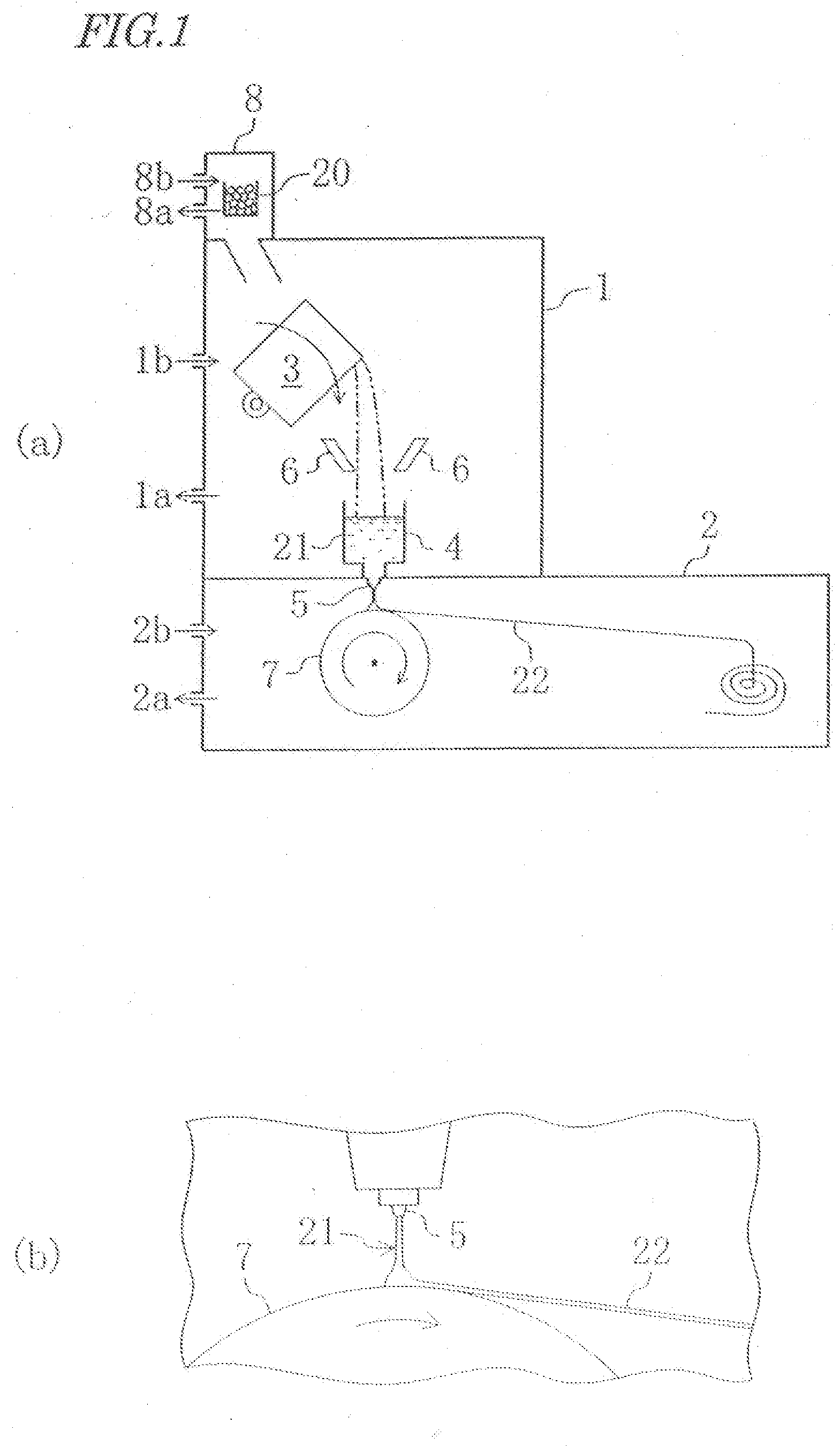Magnetic alloy material and method of making the magnetic alloy material
a magnetic alloy and alloy material technology, applied in the field of magnetic alloy materials, can solve the problems of long sintering time, low productivity, and low productivity, and achieve the effects of rapid solidification, easy pulverization, and short tim
- Summary
- Abstract
- Description
- Claims
- Application Information
AI Technical Summary
Benefits of technology
Problems solved by technology
Method used
Image
Examples
examples
[0174] Hereinafter, specific methods of making an La(Fe, Si)13 based magnetic alloy according to the present invention will be described by way of specific examples. It should be noted, however, that the present invention is in no way limited to the following specific examples.
example no.1
Example No. 1
[0175] Rapidly solidified alloy ribbons having a composition La(Fe0.88Si0.12)13 were made by a strip casting process at peripheral velocities of 5 m / s and 15 m / s of quenching roller, respectively. The average thicknesses of the alloys were 150 μm with a standard deviation of 15 μm and 100 μm with a standard deviation of 10 μm, respectively. When their crystal structures were analyzed by the powder XRD and the SEM, the constituent phases thereof were an NaZn13-type La(Fe, Si)13 phase, a bcc-(Fe, Si) phase and an La-rich portion (phase) with a crystal structure which has not been identified. And the average minor-axis sizes of these phases were 1.5 μm and 1.1 μm, respectively. Each of these ribbons was coarsely pulverized with a power mill and then finely pulverized into a powder with a mean particle size of 6 μm using a jet mill in a nitrogen gas. Next, 0.05 mass % of zinc stearate and 0.1 mass % of wax were further added as a lubricant and as a binder, respectively, to ...
example no.2
Example No. 2
[0176] The present inventors analyzed what effects the differences in the alloy preparation process, composition and manufacturing process had on the sintering process. The results are as follows.
[0177]FIG. 24 shows locations of tested compositions on the ternary phase diagram of La—Fe—Si.
[0178] The manufacturing process was carried out as follows. Specifically, an as-cast alloy was made by a die casting process, pulverized, compacted and then sintered. Meanwhile, an as-spun alloy (rapidly solidified alloy ribbon), prepared by a melt spinning process (at 10 m / s), was pulverized, compacted, and sintered. And these two types of alloys were compared with each other. When the crystal structure of the as-spun alloy obtained by the melt spinning process was analyzed by the powder XRD and the SEM, the constituent phases thereof were an NaZn13-type La(Fe, Si)13 phase and a bcc-(Fe, Si) phase, which had average minor-axis sizes of 50 nm to 100 nm. To compare the structures of ...
PUM
| Property | Measurement | Unit |
|---|---|---|
| Temperature | aaaaa | aaaaa |
| Temperature | aaaaa | aaaaa |
| Temperature | aaaaa | aaaaa |
Abstract
Description
Claims
Application Information
 Login to View More
Login to View More - R&D
- Intellectual Property
- Life Sciences
- Materials
- Tech Scout
- Unparalleled Data Quality
- Higher Quality Content
- 60% Fewer Hallucinations
Browse by: Latest US Patents, China's latest patents, Technical Efficacy Thesaurus, Application Domain, Technology Topic, Popular Technical Reports.
© 2025 PatSnap. All rights reserved.Legal|Privacy policy|Modern Slavery Act Transparency Statement|Sitemap|About US| Contact US: help@patsnap.com



